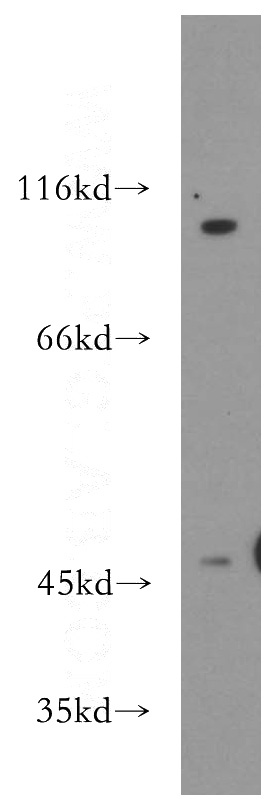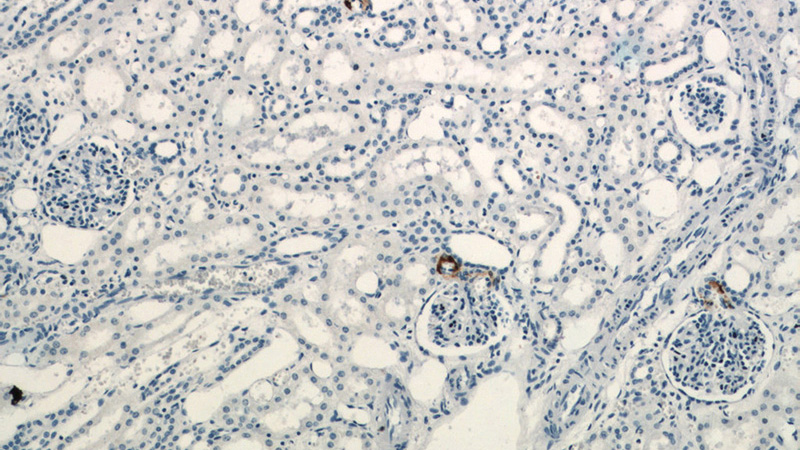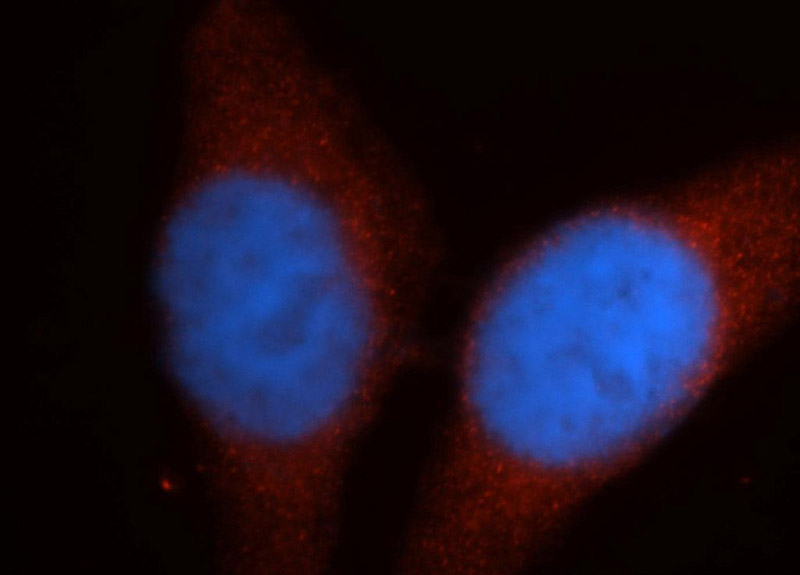-
Product Name
Renin antibody
- Documents
-
Description
Renin Rabbit Polyclonal antibody. Positive WB detected in mouse heart tissue. Positive IF detected in HepG2 cells. Positive IHC detected in human kidney tissue, human gliomas tissue, mouse kidney tissue. Observed molecular weight by Western-blot: 45-47 kDa
-
Tested applications
ELISA, WB, IF, IHC
-
Species reactivity
Human,Mouse,Rat; other species not tested.
-
Alternative names
Angiotensinogenase antibody; FLJ10761 antibody; REN antibody; Renin antibody
-
Isotype
Rabbit IgG
-
Preparation
This antibody was obtained by immunization of Renin recombinant protein (Accession Number: NM_000537). Purification method: Antigen affinity purified.
-
Clonality
Polyclonal
-
Formulation
PBS with 0.02% sodium azide and 50% glycerol pH 7.3.
-
Storage instructions
Store at -20℃. DO NOT ALIQUOT
-
Applications
Recommended Dilution:
WB: 1:200-1:1000
IHC: 1:20-1:200
IF: 1:20-1:200
-
Validations

mouse heart tissue were subjected to SDS PAGE followed by western blot with Catalog No:114689(REN antibody) at dilution of 1:300

Immunohistochemistry of paraffin-embedded human kidney slide using Catalog No:114689(REN Antibody) at dilution of 1:200

Immunohistochemistry of paraffin-embedded human kidney slide using Catalog No:114689(REN Antibody) at dilution of 1:200

Immunofluorescent analysis of HepG2 cells, using REN antibody Catalog No:114689 at 1:50 dilution and Rhodamine-labeled goat anti-rabbit IgG (red). Blue pseudocolor = DAPI (fluorescent DNA dye).
-
Background
REN(Renin) is also named as angiotensinogenase and belongs to the peptidase A1 family. It is a highly specific endopeptidase, whose only known function is to generate angiotensin I from angiotensinogen in the plasma, initiating a cascade of reactions that produce an elevation of blood pressure and increased sodium retention by the kidney. Human prorenin and renin are synthesized in juxtaglomerular cells and it locates in the juxtaglomerular cells and afferent arteriole as cytoplasmic granules(PMID:19664745; PMID:9453303). This protein has a signal peptide of 23 amino acid and a propeptide of 43 amino acid. It has 2 isoforms produced by alternative splicing and two glycosylation sites. Defects in REN are a cause of renal tubular dysgenesis (RTD) and familial juvenile hyperuricemic nephropathy type 2 (HNFJ2).
Related Products / Services
Please note: All products are "FOR RESEARCH USE ONLY AND ARE NOT INTENDED FOR DIAGNOSTIC OR THERAPEUTIC USE"
